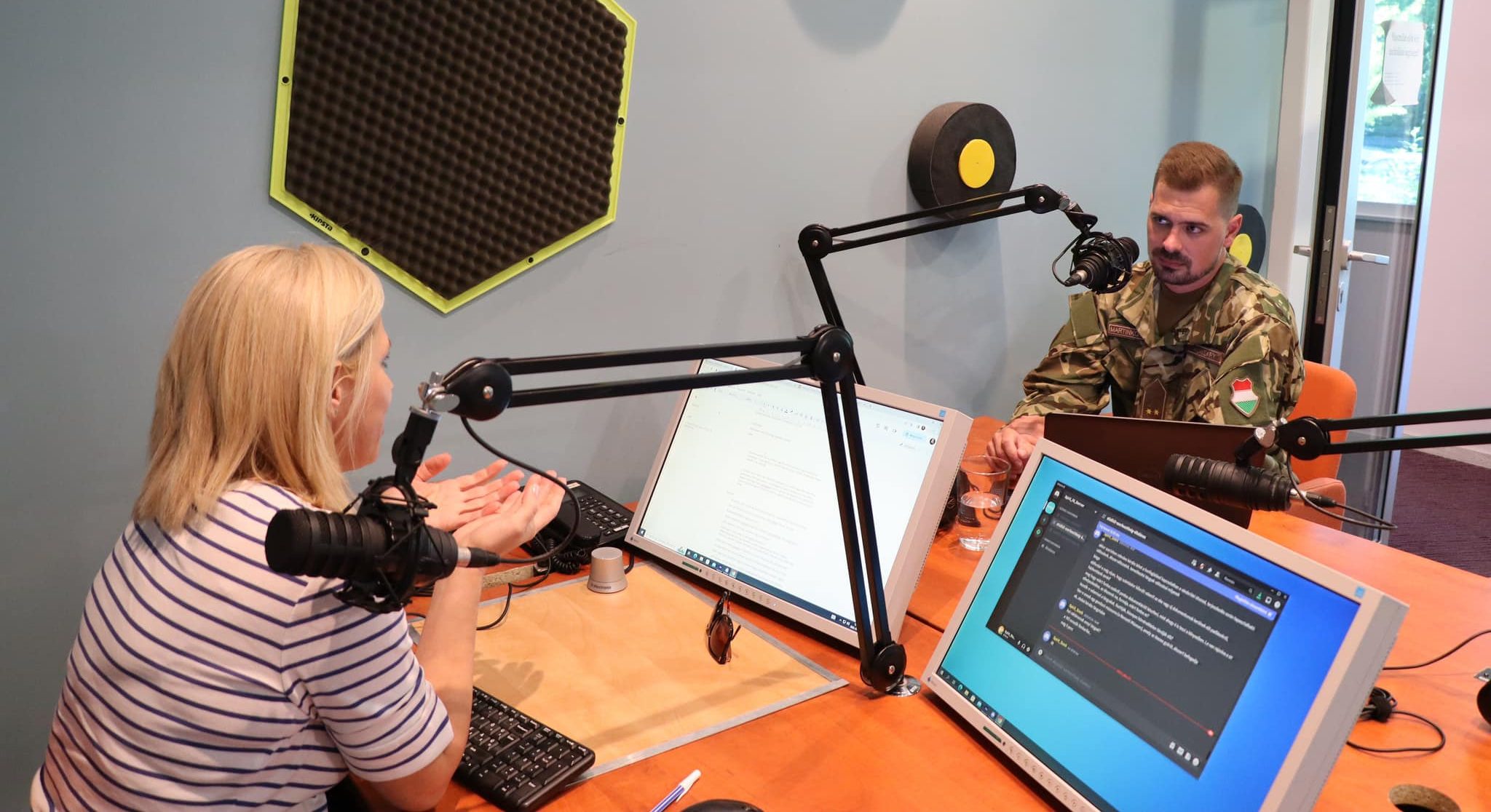The development and testing of cyber security-related technologies is also made possible with the digital training space.Continue reading
First Lieutenant Péter Martinkovics, Air Defense Controller of the Air Operations Command and Control Center of the Hungarian Defense Forces, was a guest on Spirit FM’s program Katonadolog (Soldiers can take it). In the program, they discussed, among other things, the differences between civil and military airspace control and where and how the air defense of our country is carried out – reports Honvédelem.hu.

First Lieutenant Péter Martinkovics, Air Defense Controller of the Air Operations Command and Control Center of the Hungarian Defense Forces, talks on Spirit FM’s Katonadolog program. Photo: Facebook/Honvédelmi Minisztérium
At the beginning of the program, First Lieutenant Martinkovics explained that civil air traffic control only handles general air traffic, while the military only deals with military aircraft performing operational tasks.
Air traffic control at military airfields is responsible for the area around the airbases, controlling landings and take-offs, traffic patterns, and training flights.
The role of air traffic controllers starts from the moment a military aircraft leaves the airfield area and begins its mission in the airspace allocated to it, which is typically a separate area.

Control Center of the Hungarian Defense Forces. Photo: Facebook/Honvédelmi Minisztérium
It is well-known that the civil air traffic control is located in Budapest, at Liszt Ferenc International Airport, but what many people may not know is that the military one is based in Veszprém, western Hungary, in the so-called Szikla (Rock). “It is a relatively large system, with the coordinated and precise work of many dedicated colleagues and soldiers,” says Martinkovics, adding that although Szikla is the headquarters of the unit, the center’s soldiers also serve in seven other garrisons.
Although everyone has different tasks, the goal is the same: to ensure that airspace control, radar imagery, and military air traffic control can be carried out safely there,”
he says. The task is nothing less than to guarantee the sovereignty of our country’s airspace.
The air defense controller from Veszprém also recalls that he started his studies in 2010, and has served at the center since his commissioning four years later. “I always felt that military aviation was the pinnacle of technology,” he said.
The broadcast also touches on the issue of Gripen fighter pilots and the alerts often heard in the news. The air defense controller, after detailing the process of an alert, pointed out that military air traffic control is needed to carry out such a mission. As he said, the trained navigators fly highly advanced technology, but at any time there may be a situation where the perspective of the air defense controller and the summed up information they can provide are needed.
Pilots have to keep track of a lot of things at the same time, because they are operating very complex systems and at the same time they have to take in a lot of information.
“We have to make the environment in which they are operating processable at some level,” he concluded.
In the rest of the program, First Lieutenant Martinkovics explains the 24-hour duty schedule, pointing out that there is never a break in air surveillance, so the members of the shifts work in small groups and take breaks. The latter is very important, as the workload is constantly increasing, and the soldiers themselves must be able to identify signs of fatigue that may not be visible to the outside observer, as
lack of attention and loss of concentration cannot be tolerated in this profession.
Featured image: Facebook/Magyar Honvédség